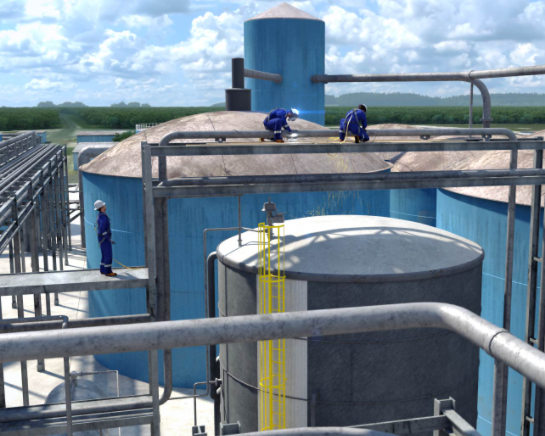The Weekly Reflektion 45/2021
When hot work is carried out, how do you assess possible hazards? The assessment of hazards requires firstly identifying that the hazard is relevant and then describing how it can arise.

Do you identify hazards and describe how these will arise?
On February 8th, 2017, welding ignited a flammable atmosphere in a 100,000-gallon (380 m3) tank at the DeRidderpulp and paper mill facility in Louisiana, USA. The explosion killed three workers, injured 7 others and blew a 9m (30 foot) high tank over a six-storey building, landing 115m (375 foot) away.
The mill produces container boards for boxes and uses chemicals, such as turpentine, in the production process. Turpentine is separated in a turpentine stripping column and the turpentine re-cycled in the process, The resultant liquid is termed ‘foul condensate’ which contains mainly water with residual turpentine and sulphur compounds. This liquid was sent to the tank involved in the incident and stored at, or close to, atmospheric pressure. At the time of the incident, the tank contained 3m (10 foot) of liquid with 6m (20 foot) of vapour above the liquid. This vapour is not normally flammable because there is no oxygen to support combustion.
The operations personnel were preparing for a major shutdown where inspection, maintenance and upgrades which required a plant shutdown were performed. One of the jobs that was planned was repair of cracked water pipes above the foul condensate tank.
It is usual that turpentine, which separates out in the liquid phase due to density differences, is periodically skimmed off and returned to the process. There was however a lack of clarity as to which department was responsible for the tank, and this was not done. The result was that there was more turpentine than expected in the tank leading to a higher concentration of turpentine in the vapour above the liquid.
Preparing for the shutdown, the foul condensate tank was isolated by closing upstream and downstream valves, and immediately began to cool. The tank was not designed to withstand full evacuation and there was a vacuum relief valve to prevent collapse. As the tank cooled, the internal pressure dropped, and the vacuum relief valve opened allowing air to enter the tank creating an explosive mixture.
The welding repairs commenced on the water pipes above the tank and ignited the mixture in the tank. This may have been sparks heating up the tank, or perhaps the electric welding equipment came in contact with the tank. The three people involved in the welding repair were killed.
On previous shutdowns, the tank was drained and purged, but the decision was taken not to do this on this occasion as no work was being done directly on the tank. The hazards ofinflammable vapours being ignited by the hot work had not been identified in the pre-job risk assessment.
Clarity in roles and responsibilities is vital for identifying hazards and managing risk. Are these clear in your operations?Do you identify hazards and describe how these hazards can arise?
